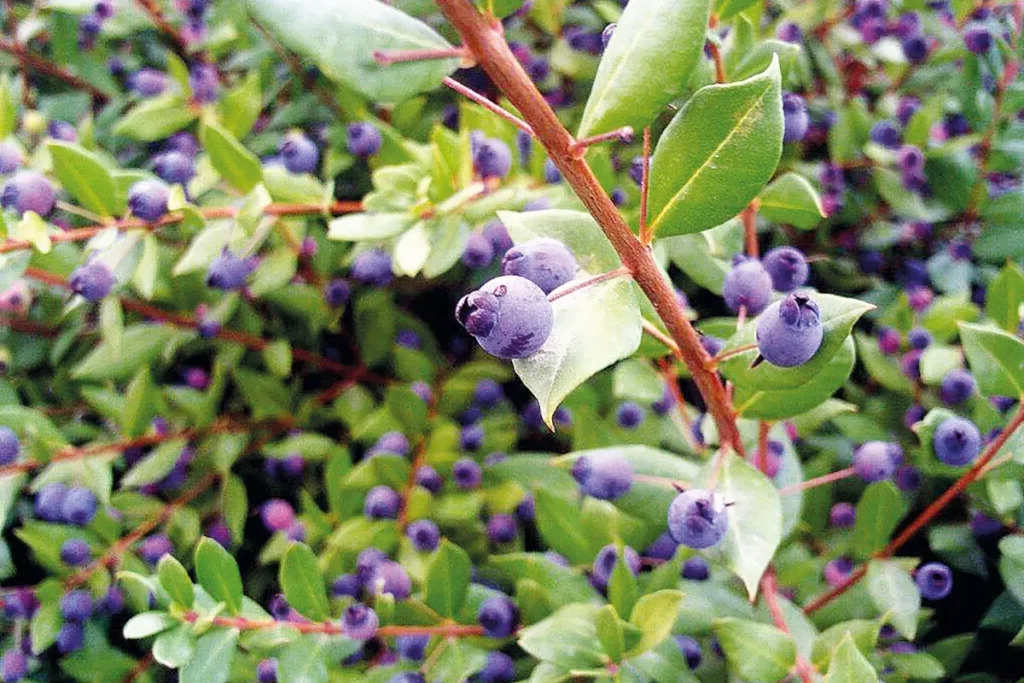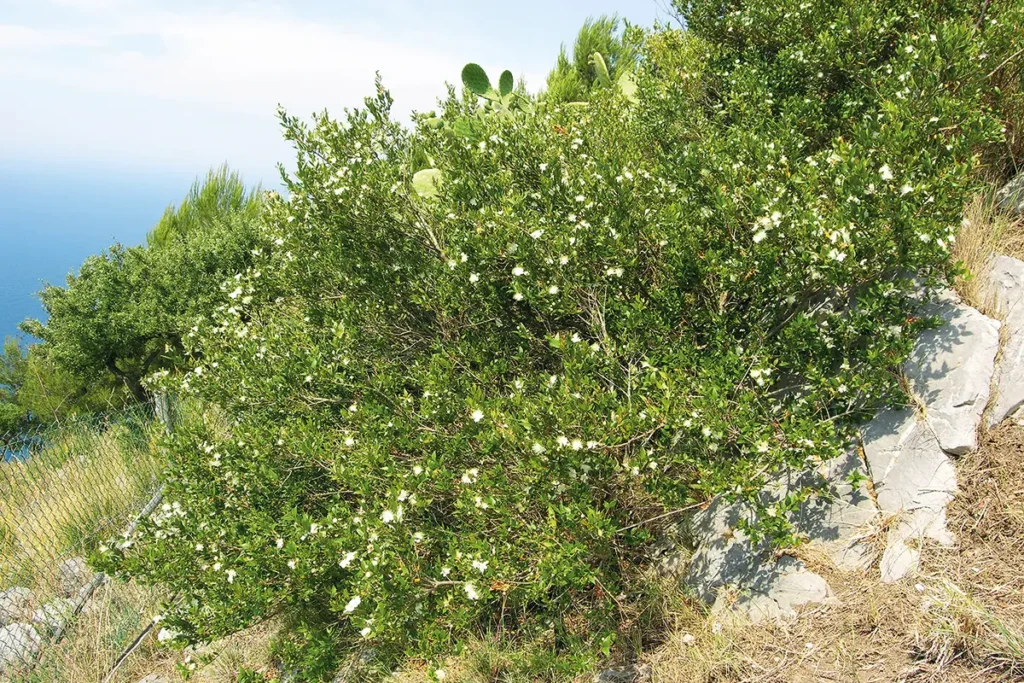


Nome Italiano: Mirto
Nome scientifico: Myrtus communis L.
Nome Gallurese: Multa
Descrizione:
Il mirto è una pianta sempreverde, il cui nome botanico è Myrtus communis L. che sviluppa un fusto ricoperto da una corteccia che varia colore in base all’età della pianta. Negli individui giovani la corteccia è rossastra, in quelli maturi vira al grigio. Ha foglie lucide e lanceolate mentre i fiori sono bianchi o rosa pallido costituiti da 5 petali che emanano un intenso ed inebriante profumo. Il fiore ha stami dai lunghi filamenti, solitari o appaiati all’ascella delle foglie, sorretti da un lungo peduncolo. La pianta fiorisce in primavera e sviluppa i suoi frutti a fine autunno inizio inverno.
Proprietà e usi:
Le proprietà del mirto sono attribuite alla presenza di olio essenziale – contenuto sia nelle foglie sia nelle bacche – e tannini, che si trovano nelle foglie. Questa pianta è usata nella medicina popolare per migliorare la digestione, tosse e bronchite. I preparati a base di foglie e bacche di mirto, come infusi e decotti sono usati anche esternamente per problematiche della pelle e delle mucose. Dai giovani rami fioriti da cui si ricava l’olio essenziale utilizzato principalmente in profumeria e in erboristeria contro la tosse, per le sue proprietà espettoranti e antisettiche. Grazie all’azione antimicotica, l’essenza è attiva anche contro le infezioni fungine e contro la Candida albicans e contro le infiammazioni della pelle e delle mucose.
Curiosità e miti:
Molto rinomato è il famoso liquore digestivo del mirto di Sardegna ricavato dalle bacche (o coccole) di colore bluastro. Mirto evoca il nome di “Myrsìne”, una fanciulla attica, il cui fiore è associato alla fecondità, che coronava gli sposi durante il banchetto nuziale. Ancora oggi, in alcune località, la pianta viene inserita nella composizione dei bouquet nuziali come simbolo di augurio completo e si esorta chi voglia essere amato a coglierne un ramo dove nel legno scorre la sua linfa gioiosa e lucente, essenza di vita purificante, resa evidente nei bianchi fiori, ricchissimi di stami dai lunghi filamenti. Fu forse per questo che un’altra usanza si instaurò nei popoli antichi. Ai bimbi appena nati, così come ai futuri sposi, veniva appoggiato sul cuore un ramoscello di mirto, affinchè l’essenza gioiosa della pianta trasmutasse nel cuore, segno di augurio di vita feconda e felice.

Italian name: Mirto
Scientific name: Myrtus communis L.
Gallurese name: Multa
Description:
The myrtle is an evergreen plant whose botanical name is Myrtus communis L. It develops a stem covered with a bark that varies in colour depending on the age of the plant. In young individuals the bark is reddish, in mature individuals it turns grey. It has shiny, lanceolate leaves while the flowers are white or pale pink and consist of 5 petals that give off an intense, heady scent. The flower has stamens with long filaments, solitary or paired at the axil of the leaves, supported by a long peduncle. The plant flowers in spring and develops its fruit in late autumn early winter.
Properties and uses:
The properties of myrtle are attributed to the presence of essential oil – contained in both the leaves and berries – and tannins, which are found in the leaves. This plant is used in folk medicine to improve digestion, coughs and bronchitis. Preparations made from myrtle leaves and berries such as infusions and decoctions are also used externally for skin and mucous membrane problems. From the young flowering branches an essential oil is obtained that is mainly used in perfumery and herbal medicine against coughs, for its expectorant and antiseptic properties. Due to its antifungal action, the essence is also active against fungal infections and Candida albicans and against inflammations of the skin and mucous membranes.
Curiosities and myths:
The famous digestive liqueur of Sardinian myrtle, made from the bluish berries (or coccola), is very popular. Myrtle evokes the name of ‘Myrsìne’, an Attic maiden, whose flower is associated with fertility, who crowned the bride and groom during the wedding banquet. Even today, in some places, the plant is included in the composition of wedding bouquets as a symbol of complete good luck, and those who wish to be loved are urged to pluck a branch of it where its joyful and shining sap flows in the wood, the essence of purifying life, made evident in the white flowers, very rich in stamens with long filaments. It was perhaps for this reason that another custom was established among ancient peoples. New-born babies, as well as future brides and grooms, used to have a twig of myrtle placed on their hearts, so that the joyful essence of the plant would transmute into their hearts, a sign of good wishes for a fruitful and happy life.
